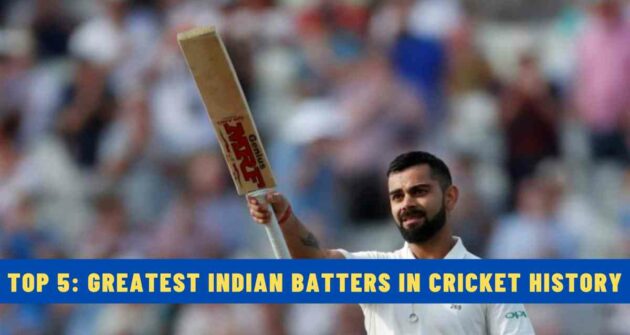Cricket is a simple game between bat and ball where the batters look to score as many runs as possible and the bowlers look to keep the run-scoring to a bare minimum. This contest between bat and ball makes cricket a highly competitive sport and one that keeps viewers engaged.
One way the bowlers can stem the flow of runs is by picking up wickets and making inroads into the batting line-up as quickly as possible. A bowler and the bowling team can see the back of a batter in not just 1 but 11 different ways.
We will delve deep into all those different modes of dismissals for a batter to get out in cricket.
Table of Contents
Caught
This is the most common form of dismissal in cricket. A batter is considered out by this way when a ball, after striking the bat, is directly caught by a fielder or wicketkeeper and should be within the boundary line.
A fielder can be a bowler himself (caught and bowled), a keeper (caught behind), or in any fielding position (slip, on the boundary line, or inside the 30-yard circle).
Also Read | Ten Best Slip Fielders in Cricket
Bowled
Another common mode of a batter getting out is by the way of bowled. This happens when a bowler’s delivery hits the stumps that are behind the batter, either directly or courtesy of any deflection from off the batter’s bat, pad, body, or any other protective equipment.
There will be no greater pleasure for a bowler than to see a batter getting dismissed in the form of being bowled.
Leg Before Wicket (LBW)
The third mode of dismissal we will see is the leg before wicket, or LBW, wherein the ball strikes the batter in line with his stumps behind him. The main criteria should be the ball should pitch and hit the pads in line with the stumps, and it is up to the on-field umpire to deem whether the batter is out or not.
The ball must hit the pad first, and if it strikes the bat first, then it will take LBW out of the equation completely. Another main LBW rule is the ball shouldn’t pitch outside the leg of a batter and also not go over the stumps.
Stumped
This happens when a batter moves out of his crease to play a ball and completely misses it, only to be collected by the keeper behind, who dislodges the bails before a batter can get back to the crease.
Stumping is a common mode of dismissal off the bowling of a spinner or slow bowler, and sometimes off a medium pacer with the keeper up to the stumps.
Run Out
All four modes above result in a bowler taking the batter’s wicket, but that isn’t the case with run out. This happens when a batter fails to reach the crease while attempting to take a run.
In short, if a batter falls short of reaching their crease when a throw or deflection disturbs the stumps, they are deemed run out. Any legitimate fielder, including the bowler and keeper, can inflict a run out.
Hit Wicket
One of the rare forms of dismissal, and it is also an unfortunate way of getting out. This happens when the batters themselves disturb the stumps while batting before the delivery is deemed dead. If their bat, helmet, or any part of their body dislodges the sticks behind them, then it is considered a hit wicket.
Obstructing the Field
A batter will be deemed out if he/she obstructs the field in his/her own consciousness. Though this type of dismissal is rare, the most common way the batter usually gets out is when he/she comes in the way of a throw from the fielder aiming at the stumps wilfully.
Hitting the Ball Twice
When a batter, knowingly or unknowingly, strikes the ball twice, it can be called out. This is one of the rarest forms of getting dismissed.
Handling the Ball
If a batter handles the ball with this hand or gloves when the delivery is still in play, then it is called out on appeal. However, a batter can receive the ball with his hand once it is dead and with the consent of the fielders and umpires.
Retired Out
This is not essentially a dismissal, but a batter can no longer partake with the bat if he/she decides to walk back to the dressing room without getting dismissed or after getting injured or falling ill.
It can be part of the strategy of the batting team to call back the batter (remember R. Ashwin doing this in the IPL 2022) and let a fresh batter continue. This would mean the retired batter can no longer bat in the innings.
Timed Out
Lack of game awareness can lead to timed out dismissal, wherein a new batter coming in after a fall of wicket fails to get ready to face his/her first ball.
They usually have a three-minute time limit to face the first delivery, and if it exceeds, the bowling team has the right to appeal and make the batter timed out.
Read Next | Ten Best Umpires in Cricket











